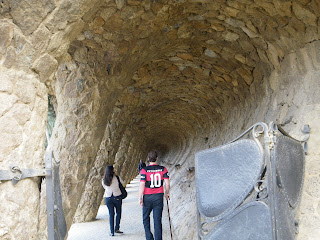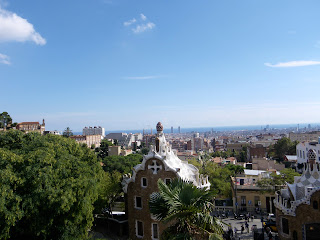It wasn't until long ago that this area of Barcelona started to become more of a residential area. Old factories are now being turned into office buildings, apartment buildings, restaurants, art studios, and even night clubs (most famously Razzmatazz). Given that Poblenou is a "late blooming" neighborhood, it is a blessing in disguise because this has given the residents of the area the opportunity to make the neighborhood how they want it. From living in this area it is evident that art is greatly appreciated and important to the local residents. Everywhere I walk I see graffiti on walls and there are also many local art stores on the Ramblas del Poblenou. There are also many music festivals and little concerts going in this area as well. Outdoor activities are also prevalent in this area. There are many parks for kids and dogs in this area and they are always being used. On the way to the beach from my apartment there is a soccer field, a rugby field, and a skate park just outside the beach and on the beach you are almost always guaranteed to see people wind surfing and kite surfing. Lastly, and most obviously, family and friends is very important to the residents of Poblenou. It is rare that you will see locals in the park, eating or drinking alone. They are always with their family and/or friends.
Poblenou is starting to become a more populated area because of the recently installed Diagonal Mar, which was the fairgrounds for the Forum and now is used to more easily connect opposite ends of the city of Barcelona. Poblenou is on the yellow line metro (L4) and has its own stop, thus showing it has now become a major part of the outer city limits of the Old City of Barcelona. Not only is there a major metro stop for Poblenou, but there is currently a project underway to install a high speed train in the St. Martin district. Poblenou resides in the St. Martin district and is one of the biggest and most influential neighborhoods in this district. By installing a high speed train in this district, it not only shows that Poblenou and the St. Martin district is greatly growing, but also that residents of this area will be able to reach more destinations faster. Poblenou is a neighborhood full of life, art, fun, and growth and I feel very fortunate to have been a "local" here for the four months that I lived in Barcelona.



































